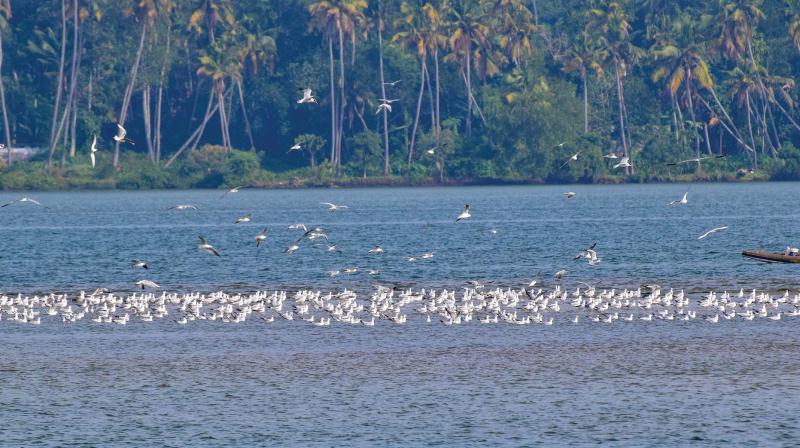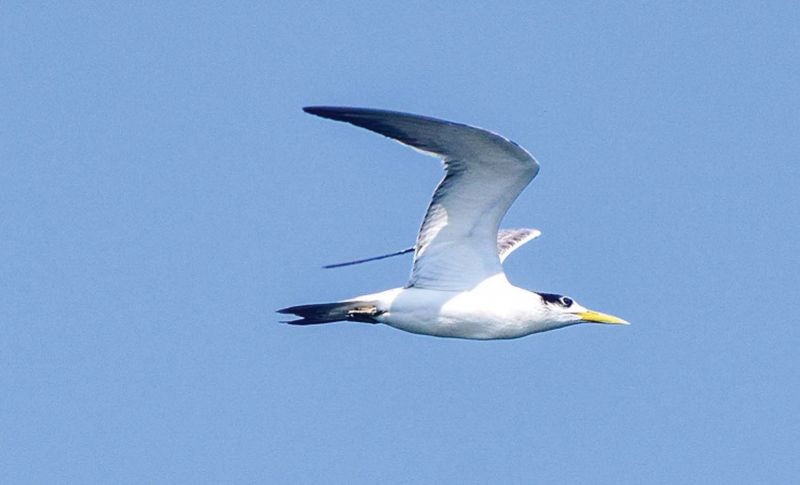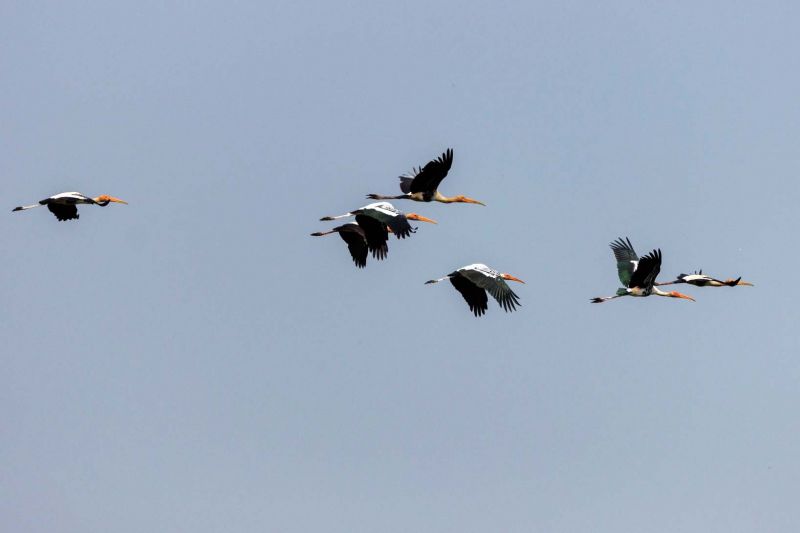Asian Waterbird Census shows 40 per cent decline in bird count
The birders observed rising pollution, unchecked reclamation and undesirable changes in birding areas.

KOLLAM: The Asian Waterbird Census (AWC) 2018 conducted in Kollam district by the WWF-India, a conservation organisation, with the support of Social Forestry wing of Kerala forests and wildlife department has found a drastic fall of around 40 per cent in the total count of birds. The AWC held in nine different bird rich sites accorded a count of 5,697 birds belonging to 61 species in place of the previous year’s count of 9,378 from 65 species. The number of migratory bird species has also fallen to 22 from last year’s 32. Polachira, the wetland known as the waterbird hub of Kollam district registered a sharp fall in migratory bird population as the wetland was totally drained for agriculture purposes.
 Great Crested Tern
Great Crested Tern
“The physical change in the habitat from being totally waterlogged like that of a lake to being converted into a fallow land could be attributed as the major reason for this drastic fall in the number of swimmers. Similar is the case in other sites also,” said A.K. Sivakumar, AWC coordinator, WWF-India. The population of grey headed Swamphen also fell from 522 to just 65 and Oriental Darters, which are designated as endangered by IUCN, were just four in place of last year’s 55. The birds which feed in shallow waters were also very few, according to the census. Presence of Wooly necked Storks, Black headed Ibis, and Eurasian Spoonbill indicate the high temperature of the locality.
 Painted strok
Painted strok
The team which visited Karali Marshes and Chittumala Chira was found slowly recovering its Grey headed Swamphen population, which was in the recent past ruined by unchecked sand mining. However, the low count of wild ducks still stands as a direct indicator of the lack of aquatic vegetation which has been destroyed by sand mining. The Sakthikulangara — Neendakara Harbours still maintain their avian richness with the highest count of Little Egrets, intermediate Egrets, and Brahmini Kites, which are all resident species and few other migratory ones like Whiskered Terns.
The census was also conducted in Vellanathuruth, a coastal island near Karunagappally, Thodiyur - Vattakkayal, Kandachira, an extension of Ashtamudi Lake, Kappil-Pozhikkara coastal region and Munroe Island areas which showed a decline in bird population. The birders observed the changing land use pattern, increasing pollution, unchecked reclamation, invasion of alien species, paddy fields left fallow, unscientific development and many other undesirable changes in most of the birding locations. The census teams were led by A.K. Sivakumar, Hari Mavelikara, V. Sujith, Gopalan, Dr R. Jishnu, G. Govind, Kiran Karakulam, S.S. Anoop, and Anu John.

